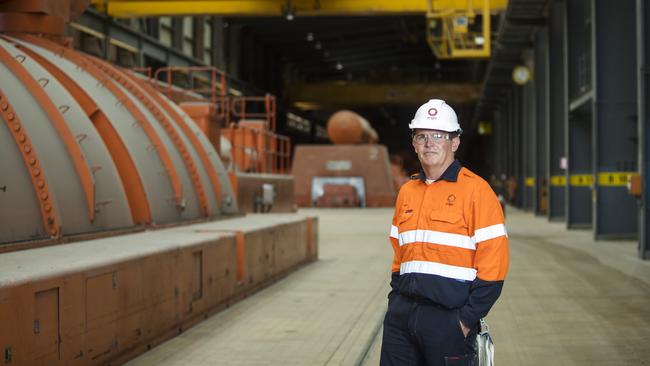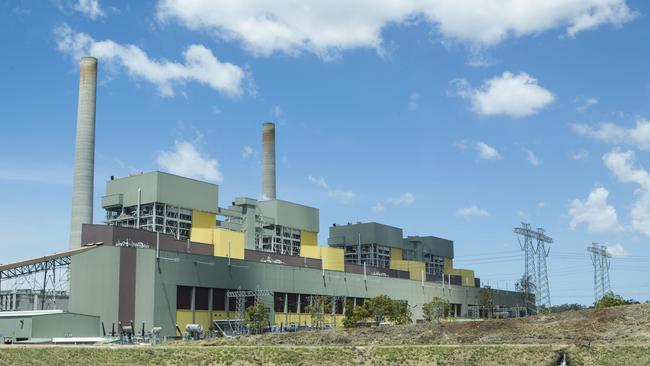NSW’s biggest coal plant, Origin’s Eraring, starts closure from 2030
Australia’s biggest coal power station, which supplies 20 per cent of NSW’s daily needs, will start shutting down within a decade.

Australia’s largest coal-fired power station will start closing its first unit in 2030 ahead of a full shutdown in 2032 amid broader market tensions as low wholesale prices and cheap renewables put pressure on the fossil fuel.
Origin Energy’s 2880 megawatt Eraring plant, which supplies 20 per cent of NSW’s daily power needs, will switch off the first of its four units in 2030. A second will exit a year later leaving it running at only half capacity until the final two generators close on its scheduled retirement date of 2032.
The move follows EnergyAustralia’s decision to shutter Victoria’s Yallourn coal power plant four years early in 2028 while AGL Energy’s Liddell coal plant will close in the 2022-23 summer, sparking a demand for generators to build new supply to avoid a spike in power prices.
The role of coal in the long-term energy mix was also called into question by the International Energy Agency on Tuesday after it declared no new coal mines, oilfields or gas fields should be opened up if the world is to reach net-zero emissions by 2050.
Origin had not previously detailed a breakdown of when Eraring would close but provided an update to the Australian Energy Market Operator as part of the grid owner’s tally of when major power generators are due to shut their facilities.
“There is no change to Origin’s plans to exit coal-fired generation by 2032. In practice, given the scale of Eraring which meets around a quarter of NSW’s power needs, its exit from the market was always going to be carefully managed to support reliability of supply,” an Origin spokeswoman said.
“Our recent update to AEMO reflects this approach, with the four units likely to be progressively closed leading up to final closure by 2032, and taking into consideration factors including the timing of major maintenance overhauls.”

Snowy Hydro’s proposed $610m gas-fired power plant in NSW’s Hunter Valley is one facility that will fill the gap once Liddell departs along with EnergyAustralia’s Tallawarra gas station expansion.
More than 300 generation and storage projects totalling 55,000MW are currently proposed across the national electricity market, according to AEMO.
Traditionally the country’s big coal generators run round the clock, reflecting both market demand for the fuel but also the difficulty in tweaking output from huge pieces of machinery that can take hours to properly synchronise with the grid.
But the relentless surge of cheap and plentiful renewables – solar, wind and hydro and battery storage – is sparking a shift among the big baseload coal producers that supply 70 per cent of the grid‘s needs and threatening the viability of the fossil fuel.
Origin is now shutting down some of its Eraring supply after meeting morning demand and firing it back up to meet evening peaks.
Black coal output declined to its lowest level for the quarter since the national electricity market was created in 1998 while gas use was at its lowest since 2005, the Australian Energy Regulator said on Monday.
The big retailers and generators like AGL Energy and Origin Energy are being battered by a storm of low wholesale electricity prices as cheap renewables continue to flood onto the market while moves by both state and federal governments to underwrite new generation has also contributed to a tough outlook for power providers.
Some investors have questioned whether the big fall in wholesale prices is sustainable given predictions baseload coal plants may need to further cut production to survive, tightening the market and leading to prices rising again.
ESB chair Kerry Schott said coal plants can struggle to receive any value for their generation when they get undercut by renewables that can produce at close to zero cost.
The ESB has previously suggested adding a new price mechanism reflecting the important reliability role provided by power stations through a ‘capacity market’ could help spur investment before coal plants retire
The difference between the cost of coal production and the price it receives for electricity has fallen to less than $20 per megawatt hour, piling pressure on generators reliant on the fuel to consider lowering their output or changing bidding patterns into the grid.




